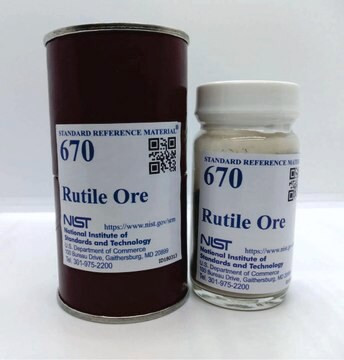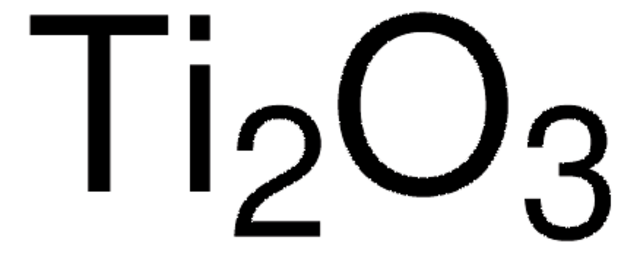Wichtige Dokumente
635057
Titan(IV)-oxid, Rutil
<001>, (single crystal substrate), ≥99.9% trace metals basis, L × W × thickness 10 mm × 10 mm × 0.5 mm
Synonym(e):
Titandioxid
About This Item
Empfohlene Produkte
Qualität
optical grade
Beschreibung
single side polished
Assay
≥99.9% trace metals basis
Form
(single crystal substrate)
(single side polished)
Härte
7 mohs
L × B × Dicke
10 mm × 10 mm × 0.5 mm
Durchlässigkeit
0.5-4.5 μm
mp (Schmelzpunkt)
1840 °C
Dichte
4.17 g/mL at 25 °C (lit.)
4.26 g/mL at 25 °C
Halbleitereigenschaften
<001>
SMILES String
O=[Ti]=O
InChI
1S/2O.Ti
InChIKey
GWEVSGVZZGPLCZ-UHFFFAOYSA-N
Suchen Sie nach ähnlichen Produkten? Aufrufen Leitfaden zum Produktvergleich
Leistungsmerkmale und Vorteile
Physikalische Eigenschaften
Physikalische Form
Lagerklassenschlüssel
11 - Combustible Solids
WGK
nwg
Flammpunkt (°F)
Not applicable
Flammpunkt (°C)
Not applicable
Persönliche Schutzausrüstung
Eyeshields, Gloves, type N95 (US)
Hier finden Sie alle aktuellen Versionen:
Besitzen Sie dieses Produkt bereits?
In der Dokumentenbibliothek finden Sie die Dokumentation zu den Produkten, die Sie kürzlich erworben haben.
Kunden haben sich ebenfalls angesehen
Artikel
Building and Engineering Micro/Nano Architectures of Single-Walled Carbon Nanotubes for Electronic Applications
A hard disk drive (HDD) is a data storage device that stores digital information by magnetizing nanosized magnets on flat disks and retrieves data by sensing the resulting magnetic field.
Spin-based electronic (spintronic) devices offer significant improvement to the limits of conventional charge-based memory and logic devices which suffer from high power usage, leakage current, performance saturation, and device complexity.
Nanomaterials are considered a route to the innovations required for large-scale implementation of renewable energy technologies in society to make our life sustainable.
Unser Team von Wissenschaftlern verfügt über Erfahrung in allen Forschungsbereichen einschließlich Life Science, Materialwissenschaften, chemischer Synthese, Chromatographie, Analytik und vielen mehr..
Setzen Sie sich mit dem technischen Dienst in Verbindung.


